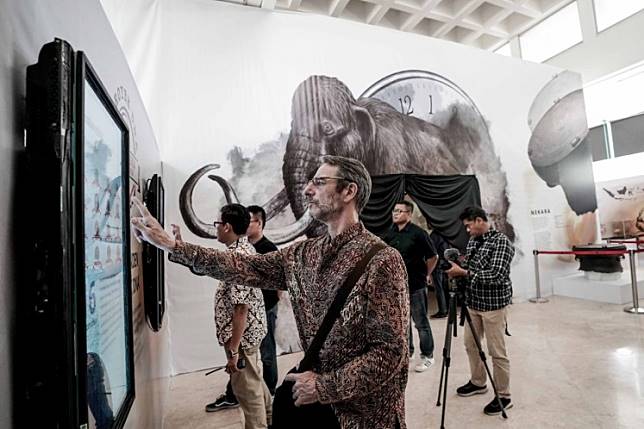Popular Reads
Top Results
Can't find what you're looking for?
View all search resultsPopular Reads
Top Results
Can't find what you're looking for?
View all search resultsTracing origins of native Indonesians through archaeology
Anies Baswedan even used the term "pribumi" during his speech as a newly inaugurated Jakarta governor, which sparked a controversy.
Change text size
Gift Premium Articles
to Anyone
P
ribumi (native) has become a popular term in the past few years, especially after the 2017 Jakarta gubernatorial election, when Anies Baswedan used it during his speech as a newly inaugurated Jakarta governor and sparked controversy.
An exhibition at the National Museum of Indonesia in Central Jakarta, Asal Usul Orang Indonesia (Origins of Indonesians), which runs until Nov. 10, aims to enlighten so-called pribumi Indonesians about their roots.
Hosted by the magazine Historia.id, the event featured several discussions, including “Jejak Manusia Nusantara and Peninggalannya” (Traces of Nusantara humans and their heritage) on Tuesday.
Sharing insights based on archaeological studies, the discussion participants concluded that amid the physical differences, all races in Indonesia actually came from similar evolutionary branches.
Archaeologist Harry Widianto explained that Papuan, Manadonese or people who live in other parts of Indonesia, such as East Nusa Tenggara, Kalimantan and Sumatra, have different physical features, but that was influenced by several factors, namely local evolution, miscegenation and migrations.
“It’s a complex [process] and it can’t be generalized,” said Harry, who is an archaeologist at the Yogyakarta Archaeology Center.
To give a better understanding about the origins of Indonesians, Harry explained that two early human migrations happened.
The first out of Africa happened about 1.8 million years ago. Harry said that, at that time, Homo erectus traveled to find food, which led them to eventually arrive on Java Island.
However, Homo erectus then went extinct about 100,000 years ago for unknown reasons.
Read also: The origins of Indonesians: New study suggests none are truly 'pribumi'
Meanwhile, modern humans, Homo sapiens, appeared about 150,000 years ago and moved out of Africa to five continents. Some went to Melanesia and created a racial group known as Melanesians. They then traveled to Papua and Halmahera.
“They are the direct descendants. They have curly red hair. It’s passed down to our brothers and sisters in Papua and Halmahera,” said Harry.
Some of the modern humans, who were part of the second migration out of Africa, moved south to Australia 30,000 years ago.
They continued to move to the eastern parts of Indonesia, through East Nusa Tenggara and West Nusa Tenggara, arriving on Java, Borneo and Sumatra islands.
“They’re Australomelanosoid. They lived in caves between 15,000 and 5,000 years ago, before theoretically disappearing,” said Harry.
Harry added that about 7,000 years ago a small population of so-called Mongoloids appeared in Fujian, China and then moved to Taiwan about 6,000 years ago, creating a bigger population.
These Mongoloids traveled to the other parts of the globe, passing through the Philippines and Sulawesi, reaching Vanuatu, Polynesia and Madagascar.
In East Nusa Tenggara and West Nusa Tenggara, the Australomelanosoid mixed with the Mongoloid.
Meanwhile, the Mongoloid race also arrived on Java and other islands in Indonesia.
When asked about ethnic differences in Indonesia, such as on Sumatra, Harry replied, “For me, it’s clear, the residents of Sumatra are Mongoloid.”
Harry said that Batak or Minang are ethnic groups, explaining that since they lived in separate locations, they formed a different culture, local dialects and traditions. (mut)











